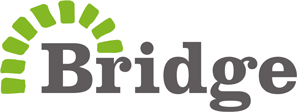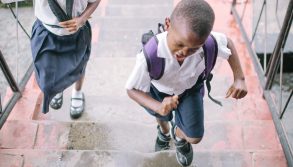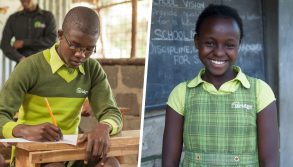Leave no child behind
13 June 2018
For the Day of the African Child on Saturday 16th June we explore the theme ‘Leave no child behind’.
The promise of success for all pupils adorns many schools’ mission and vision statements. Very few school systems deliver on this promise. It’s understandable because it’s hard. All means all, one hundred percent, leave no child behind. We often label such goals as lofty, out-of-reach, political. So, while the mission and vision say “all”, we often really mean “most”. Or perhaps we mean, “all who are capable”.
This is true in Uganda, where it’s normal for more than one in ten children to fail their end of primary school exam. It’s even more true in the less-developed eastern Uganda where 44% of children graduate from the exam in the bottom two divisions.
Perhaps the largest current effort to improve these outcomes and guarantee effective schooling for all pupils is a $100,000,000 (USD) collaboration between the Global Partnership for Education and The World Bank. The Teacher and School Effectiveness Project aims to improve teaching and learning in Uganda through development and innovation across four areas:
- Teacher competency;
- Teacher effort;
- Curriculum resources; and,
- School-level accountability and support.
While the report has not yet been released (the proposal sets a release date of summer 2018), the research underlying the project’s theory of action is sound. This project is built upon a core belief that teaching quality matters and that good teaching is multifaceted. This project will work to develop teacher competencies in literacy and numeracy, ensure that teachers attend school and spend their time as classroom instructors, provide teachers with high quality instructional materials, offer them good feedback, and ensure that teachers are supported and held accountable by effective managers. One of the key tests for whether this is happening is, of course, how well students demonstrate their learning on performance assessments.
We at Bridge have embraced the spirit of the GPE/World Bank’s Teacher and School Effectiveness Project, and have built an instructional delivery system designed to ensure that every student has an effective teacher, and that all teachers receive the materials, guidance, and support they require to be effective. We believe it is working. In fact, Bridge Schools in Uganda had their entire inaugural class pass their 2017 Primary Leaving Exam (PLE).
All pupils.
All these pupils live in one of Uganda’s poorest regions. No excuse. Many of these pupils came to school underprepared. No excuse. Forty percent of these pupils are girls. No excuse. Many of these pupils’ parents did not graduate secondary school. No excuse. Our preliminary test results showed that success was not guaranteed and pupils would have to work very hard to succeed. No excuse.
Without excuses and without the willingness to compromise our mission and our promise, Bridge Uganda teachers did what it took to ensure the success of all pupils: they showed up, taught their lessons, provided students time to practice, gave feedback, and monitored improvement. Managers at Bridge worked to support teachers’ efforts with high quality instructional materials, job-embedded training and development, assessment results that identified gaps in learning, and consistent feedback regarding teaching performance.
The PLE results were outstanding: 93% of Bridge pupils scored in the highest two divisions (of four) compared with 56% of pupils nationwide.
In the east, Bridge pupils were twice as likely as their peers within their region to achieve top scores.
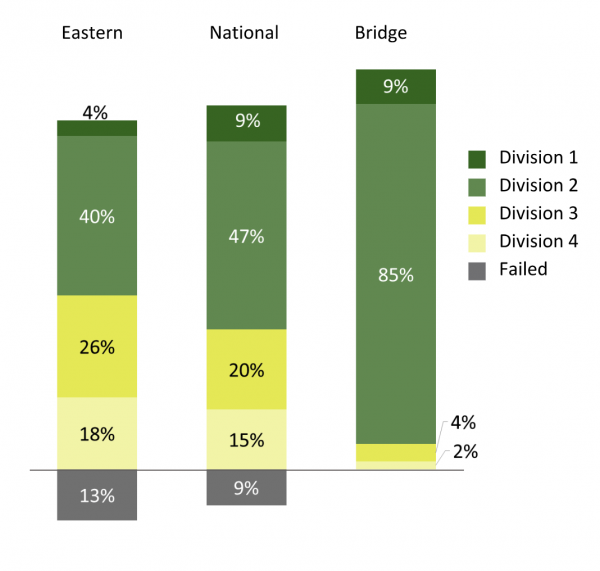
Bridge girls’ performance equalled Bridge boys’ performance and challenged the prevailing gender performance gap. Bridge girls were almost two and a half times more likely to achieve Division 1 or Division 2 than girls across Eastern Uganda.
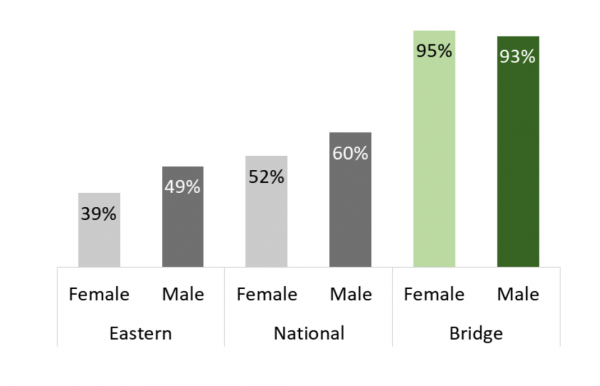
Bridge opened its first academies in Uganda in 2015. This first graduating class has performed exceptionally well, but it is Bridge’s design to have such performance be the standard outcome of an education delivered well, not an exception. In 2018, Bridge will work hard to understand what worked, what can be improved, and how it can help all pupils achieve an even higher standard: PLE scores at Division 1 and Division 2.
All of us at Bridge are delighted to be helping the Ugandan government improve education provision for families living in the east. For the sake of their children, this partnership should continue for many years to come.
All pupils means leave no child behind.

